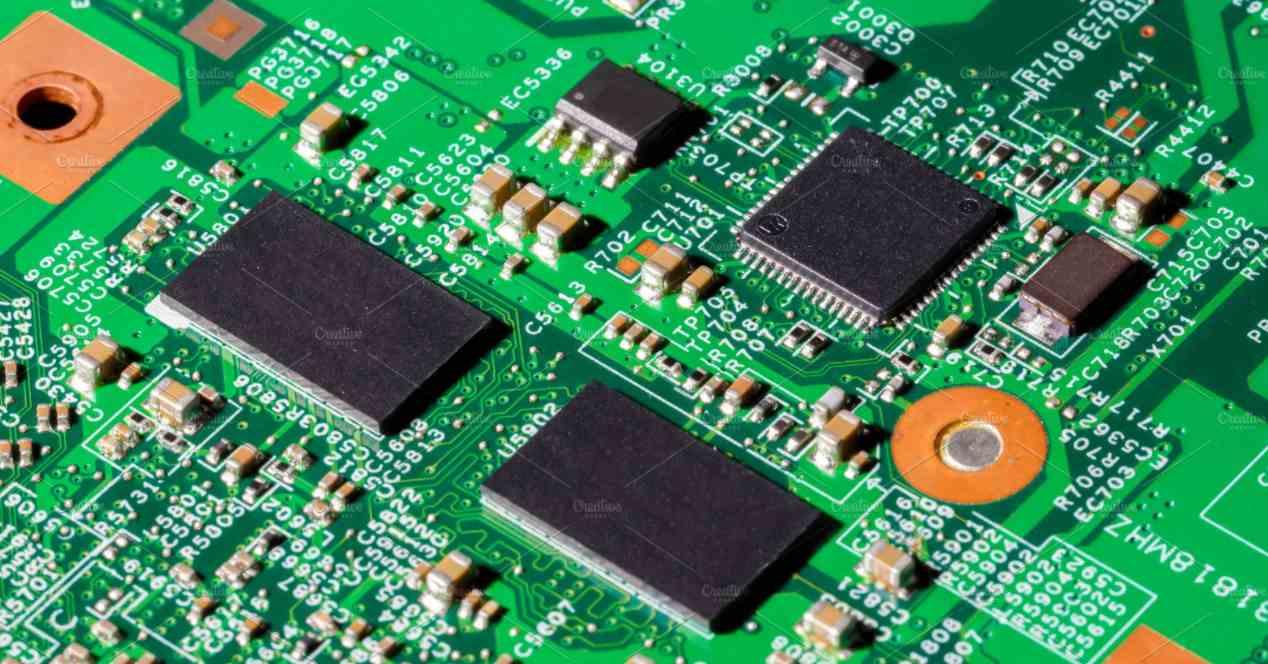If you take an old computer magazine and flip the pages until you reach the advertisements in the computer stores, you will see peripherals to add to the PC that today are completely gone. The reason is that as new manufacturing nodes have appeared, the number of transistors per area has increased, which makes it possible to add more elements to it.
What do we mean by material integration?
One way to take advantage of Moore’s Law is to create more complex processors, but another is to integrate more and more elements, which has led many devices over time to end up inside. other chips or even inside the main processor. This is what caused peripherals that were previously sold separately to be included as standard in the PC.
Have you ever wondered where those network cards, sound cards, and many other peripherals have gone? Over time, they were integrated more and more into our computers until they almost disappeared from our sight, but they are still among the circuits of our computer, only in an invisible way, because they were integrated into other components and / or peripherals.
The downside of hardware integration: what you don’t see that you don’t talk about
One of the problems with integration into the hardware is that it disappears in the eyes of the user, which in principle is an advantage can end up being a disadvantage on other fronts. The most obvious? The fact that the companies that are dedicated to the design and production of this type of PC components have to be reoriented or they will eventually disappear from the market.
The success of embedded components makes sense for PC assemblers, the reason is that they drastically reduce the cost of producing a computer and when an embedded device ends up being good enough for general use, then use of variants or versions that do this job of a better way of building a new computer because it is much cheaper.
Quite well is technically what the ordinary user can absorb through his knowledge, if we integrate, for example, a sound card and that it meets in its specifications what this user asks or what his level of knowledge tells him that ‘it has good performance, then the user will not care about the specification, because the problem will be given as fixed, since it is not a priority.
The reality is, we’ve gotten used to suddenly disappearing specs that seemingly don’t matter to the day-to-day performance of our PCs. For the simple fact that the manufacturers think they are good enough and the reality is that a good chunk of these components have completely stalled and do not offer better specs or performance over the years.










